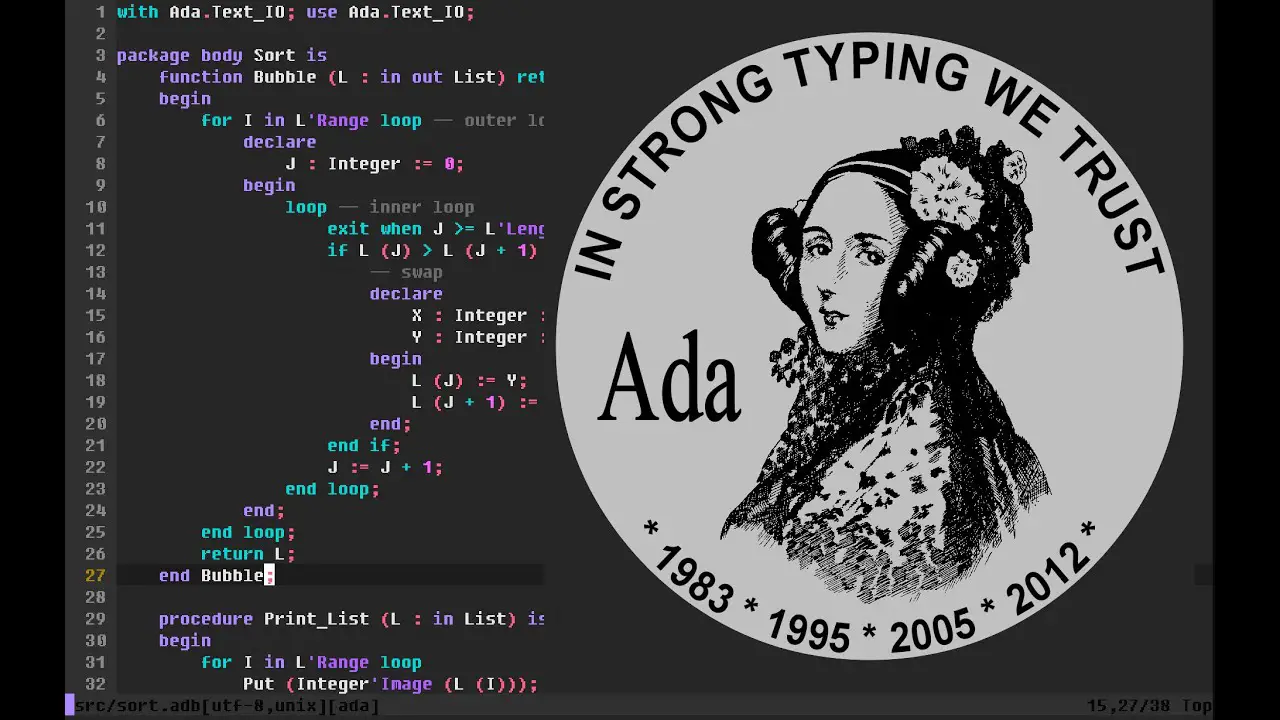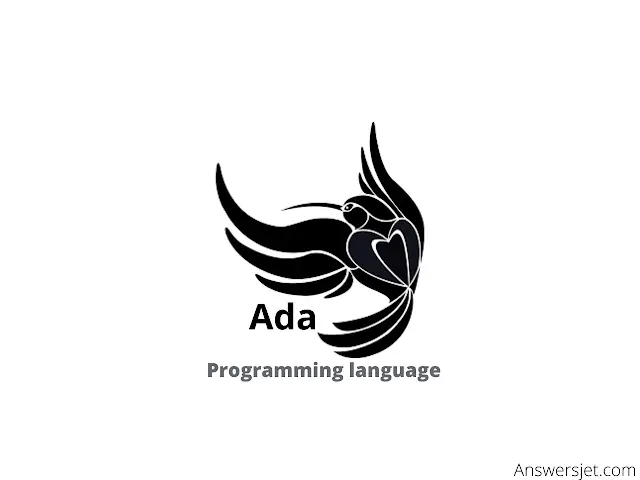Ada: The Language of Safety-Critical Systems

Introduction

Ada is a high-level programming language designed specifically for developing safety-critical systems. It is widely used in domains where reliability, security, and maintainability are paramount, including:

- Aerospace and defense
- Medical devices
- Transportation systems
- Nuclear power plants
- Financial software
Core Design Principles
Ada is based on the following design principles:
- Safety: Prevents runtime errors through static checking and strong type safety.
- Reliability: Supports fault tolerance and error handling mechanisms.
- Maintainability: Promotes code readability, modularity, and testability.
- Portability: Compiled into efficient native code for various hardware platforms.
- Real-time: Allows developers to specify real-time constraints and manage timing.
Key Features
Ada’s key features that contribute to its suitability for safety-critical systems include:
- Static Semantic Analysis: Code is checked for errors before execution, eliminating potential runtime failures.
- Strong Type System: Enforces strict data type compatibility, preventing type errors and undefined behavior.
- Exception Handling: Provides robust mechanisms for handling and recovering from unexpected events.
- Multitasking: Supports concurrent execution of tasks, allowing for real-time scheduling and responsiveness.
- Modular Design: Encourages decomposition of code into reusable and testable modules.
- Formal Specifications: Can be integrated with formal methods to mathematically prove the correctness of software designs.
- Compilation to Native Code: Produces efficient and optimized native code for specific hardware platforms.
Safety Standards Compliance
Ada is certified to comply with numerous safety standards, including:
- DO-178B/C: For avionics systems in civil aircraft
- IEC 61508: For electrical, electronic, and programmable electronic safety-related systems
- ISO 26262: For road vehicles
Applications and Examples
Ada is used in a wide range of safety-critical systems, such as:
- The avionics systems of the Boeing 787 Dreamliner
- The guidance and control software of the NASA Space Shuttle
- The electronic control units of Airbus A380 aircraft
- The radiation monitoring systems of nuclear power plants
- The trading systems of major investment banks
Advantages
The use of Ada in safety-critical systems provides several advantages:
- Reduced Development Risk: Static analysis and strong typing prevent errors, reducing the likelihood of software defects.
- Enhanced Reliability: Exception handling and fault tolerance mechanisms ensure robustness in the face of unexpected events.
- Improved Maintainability: Modular design and code readability simplify updates and modifications.
- Certification Compliance: Compliance with safety standards assures compliance with regulatory requirements.
Conclusion
Ada is a powerful and dependable programming language specifically designed for developing safety-critical systems. Its core design principles, key features, and compliance with safety standards make it the preferred choice for applications where reliability, security, and maintainability are crucial.# Ada: The Language of Safety-critical Systems
Executive Summary
Ada is a high-level programming language specifically designed for developing safety-critical systems. Its emphasis on reliability, maintainability, and formal verification makes it an ideal choice for applications where failures could have catastrophic consequences. In this article, we will explore the unique features and benefits of Ada, showcasing its capabilities in safety-critical domains.
Introduction
In the realm of software development, safety-critical systems occupy a realm of paramount importance. These are systems whose correct functioning is essential to prevent loss of life, property damage, or environmental harm. The aerospace, defense, healthcare, and nuclear industries heavily rely on safety-critical systems, demanding rigorous development processes and unwavering reliability. Enter Ada, a language meticulously crafted to meet the exacting demands of safety-critical software engineering.
FAQs
-
What industries use Ada?
- Aerospace
- Defense
- Healthcare
- Nuclear
- Railways
-
What are the advantages of using Ada?
- High reliability
- Enhanced security
- Improved maintainability
- Reduced development costs
-
Is Ada still relevant today?
- Yes, Ada continues to be widely used in safety-critical systems due to its proven track record and ongoing development.
Key Subtopics
Static Type Checking
- Enforces strict data type definitions at compile time.
- Prevents common errors such as type mismatches and undefined behavior.
- Enhances code readability and maintainability.
- Ensures program correctness and reliability.
Exception Handling
- Provides a robust exception handling mechanism to manage runtime errors gracefully.
- Ensures that errors do not propagate silently, leading to system failures.
- Facilitates error recovery and system resilience.
- Improves software reliability and safety.
Real-time Support
- Offers built-in features for developing real-time systems.
- Provides facilities for task scheduling, synchronization, and interrupt handling.
- Ensures timely and predictable system behavior.
- Critical for applications where timing is crucial, such as flight control and medical devices.
Formal Verification
- Supports formal methods, such as model checking and theorem proving.
- Enables rigorous mathematical proofs of program correctness.
- Provides a higher level of assurance than traditional testing alone.
- Enhances trust in the safety and reliability of the software.
Code Generation
- Generates highly efficient code optimized for specific hardware architectures.
- Reduces the need for manual assembly language programming.
- Enhances performance and efficiency, which is crucial for embedded systems.
Conclusion
Ada stands as a testament to the power of rigorous engineering and the pursuit of safety in software development. Its unwavering focus on reliability, maintainability, and formal verification has made it the language of choice for safety-critical systems across a wide range of industries. By embracing Ada, developers can create software solutions that are not only functional but also trustworthy and resilient, ensuring the safety and well-being of countless lives.
Keyword Tags
- Safety-critical systems
- Ada programming language
- Static type checking
- Real-time support
- Formal verification



